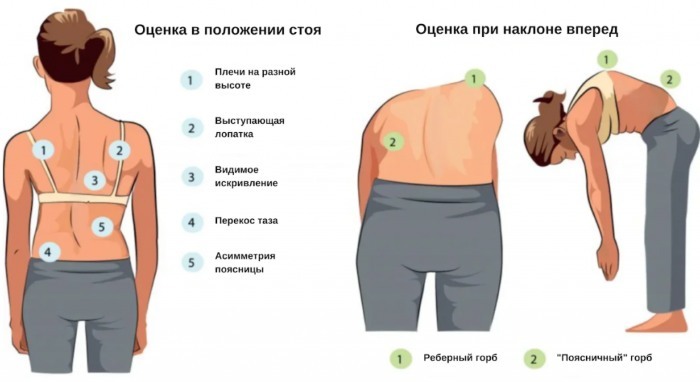Rotavirus disease each year in the form of hundreds of thousands of outbreaks recorded worldwide. Almost 25 million individuals suffer from this disease every year, and 600-900 thousand. cases terminated fatally, accounting for nearly a quarter of all deaths that occur in diseases with the diarrheal syndrome.
In our country registers about 2 million. cases of acute intestinal infections in a year, of which around 15% comes from rotavirus gastroenteritis. At the same time, 90% of children in the blood can be detected protivorotavirusnye antibodies that only confirms the wide spread of the disease.

What it is?
Rotavirus - an infectious disease caused by rotavirus. It is the most frequent cause of diarrhea in children. For this characteristic acute onset of the disease, moderately expressed symptoms of gastroenteritis or enteritis, frequent combination of intestinal and respiratory syndrome in an initial stage of the disease. Rotavirus infection is often incorrectly referred to as "intestinal flu", although rotavirus has no relation to influenza viruses.
exciter
The causative agent of the infectious disease is considered rotavirus, which belongs to the family of reovirus. The name of the virus was due to a significant resemblance to the wheel, which, translated into Latin, the language sounds like a company. Distinguish 8 different species of rotaviruses, but most often detectable species - is rotavirus A, in which case 90% is released in humans during the development of the disease.
Genetic information is a genome comprising a molecule of ribonucleic acid consisting of two strands, surrounded by the capsid protein which represents a shell comprising 3 layers. Outside, the virus does not have a protective capsule, which is often called superkapsidom. The virus reaches a diameter of from 65 to 75 nanometers, it is well resistant to low temperatures, which confirms the conservation of its properties after repeated freezing. But when boiled, and when exposed to alcohol, he instantly dies. It is also noted its stability in an aqueous environment when using chlorine compounds.
How it is?
Rotavirus disease is often called the "dirty hands" (as well as Botkin). This infection is transmitted mainly through the mouth and through the contaminated products. It can be spread by close contact (kissing), and when using the same dishes. It is not transmitted by shaking hands (if after they carefully wash their hands, and if the child does not take his fingers in his mouth).
In the acute phase of the disease the virus is contained in a detachable mucus. Therefore, we can catch them by coughing and sneezing sick person.

Pathogenesis
Rotavirus replication cycle there is a standard virions in the human body. Propagated by the pathogen in the epithelial cells of the upper intestine, which die in large numbers. They are replaced by "promptly" immature epithelium, which is not able to absorb water. The result is a loss of fluids and electrolytes.
However, the main cause profuse diarrhea and dehydration is osmotic diarrhea: enteric accumulate a large amount of undigested sugars as immature cells. As a result, an osmotic pump water intensively "pumped" into the intestinal lumen. It is interesting that few people realize that such a breach as diarrhea - is the same as that wedding attire beautiful bird or butterfly: bird attracts partner which increases the chances of reproduction, and profuse diarrhea dramatically increases the chance of spreading the virus over a wide area, which leads to multiplication and prosperity species.
After undergoing intestinal infection reduction is generally completed by 5 - 8 week, except for the secondary dysbiosis, which shall be subject to correction.
incubation period
The incubation period may be from 1 to 5 days.
Symptoms of rotavirus in the child
For rotaviroza characterized by acute onset and usually benign. The first signs of rotavirus infection in children are:
- loss of appetite;
- general deterioration and weakness;
- sharp cramping in the abdominal area;
- vomiting (up to 3-4 times a day, in Vol. h. even in the morning on an empty stomach);
- improving overall body temperature (up to 39˚ C).
Soon, the patient developed acute diarrhea. Yellowish copious watery stools, without any admixture of blood with a sharp sour smell. As a result of severe diarrhea develops severe dehydration (dehydration) the body, which can threaten the patient's life. Critical signs of dehydration are rotavirus confusion or loss of consciousness and convulsions.
For other clinical manifestations that may be identified during the inspection include:
- redness of the conjunctiva of the eye;
- hyperemia of the pharynx and palatine arches.
On the second day, usually occurs drowsiness due to general weakening of the body.
Clinical symptoms observed during 4-7 days, after which the bright signs of rotavirus infection subsides, and there comes a full recovery with the formation of a fairly immune to virus.
Symptoms of rotavirus infection in adults
Adults also suffer rotavirozom, but some may take it for symptoms of indigestion usual time (say, "something not eat"). Nausea and vomiting is usually not disturbed, may be weakness, loss of appetite, fever and diarrhea, but not for a long time.
Rotavirus infection in adults is often asymptomatic. Despite the effacement of symptoms, the patient remains contagious it all the time.
Easier flow of rotavirus infection in adults is due not only to a strong immunity, but also a greater adaptability of the gastrointestinal tract to such shocks. Typically, if a family or in a group there are infected, in turn begin to get sick, and the rest for 3-5 days. Prevent infection from infection media is possible only in case of an active immune system.
dangerous symptoms
There is a group of "alarming" symptoms for children and adults, when they appear, you should immediately seek emergency medical help. They indicate a severe infection during and require hospital treatment.
It is particularly important to monitor the appearance of these symptoms in a sick child, because he alone can not do.
- Increased diarrhea up to 10 times per day or repeated vomiting (more than 7 episodes per day) - an active output when a liquid rotavirus greatly enhances toxin poisoning organism. In this case, the patient is admitted to hospital infection, where make up the lost fluid volume and electrolyte via droppers.
- The appearance of red blood in the stool or black stool staining (with a brilliant shade and unpleasant smell) - a very unfavorable sign, which indicates that opens intestinal bleeding. In this case, you should immediately call the ambulance brigade or treat the infectious diseases hospital / hospital.
- Rash on the body - a small (up to 5 mm) and the rare red spots, which appeared during the illness, very characteristic for typhoid and paratyphoid. In some cases, these diseases can masquerade as ordinary rotavirus infection.
- Severe abdominal pain - with a typical course, abdominal pain almost not expressed. A significant increase in pain may indicate damage to the intestinal wall.

Diagnostics
It is necessary to distinguish between rotavirus infection from food poisoning, cholera, salmonellosis, yersiniosis. To this end, a differential diagnosis.
The diagnosis is based on clinical data for positive results of laboratory analyzes. Compulsory done coprogram. When infected with rotavirus antigen in feces detected rotavirus infection.
blood on the overall analysis also gives up. The serum antibodies are (but only after recovery).
complications
Severe complications for the patient, ill rotavirus, no. However, it should be borne in mind that the more serious bacterial infection with the accession course of the disease, the clinical picture and symptoms can vary, the approaches to the treatment of this type of disease is also a. In people with weakened immune systems, as well as HIV-infected may develop hemorrhagic gastroenteritis and necrotizing enterocolitis.
Treatment of rotavirus
Rotavirus infection can show a different course of the disease, but the treatment is in 2 acts - rehydration and decreased activity of the virus. Often the treatment of rotavirus in adults or children, and may require the appointment of antipyretic drugs. Such drug should be at a temperature above figure in 38,5 ° C and avoid the use of acetylsalicylic acid (aspirin).
To avoid dehydration of required rehydration therapy. Patients are encouraged to drink water, better salt solutions (rehydron or salt solution prepared as follows: 1 hour. l. salt in 1 liter of water). The liquid to be taken in small portions is not more than 50 ml every half hour. Intravenous fluids may be required only in case of very severe disease with progressive intoxication of the organism.
Scheme of treatment depends on the severity of the disease, age of the patient and the location, but always includes antivirals and excessive drinking. Also appoint absorbents, reduce intoxication. The treatment can take place both at home and in the hospital.

Diet
Therapy should start with proper nutrition. Older children and adults should be excluded from your diet:
- Any plant food (berries; vegetables; fruits, including dried);
- Bread and flour products;
- Fatty, salty, spicy, fried foods;
- Whole milk;
- Brees.
According to recent studies, all this food enhances the intestinal activity, which is why diarrhea will continue a little longer. At the time the disease is recommended to eat boiled lightly salted porridge, small but frequent meals.
medication
Home treatment necessarily require treatment to doctors. On prescription drugs used by these groups:
- Antivirals - "Kagocel", "Citovir".
- Enzymes to improve digestion - "Pangrol", "Creon".
- Antidiarrheal drugs - "Enterol", "loperamide" "Imodium".
- Pre- and probiotics - "Linex", "Bifiform", "Atsipol", "Bifidumbacterin", "Hilak forte"
- Antipyretics - "Ibuklin" "Paracetamol", "Nurofen". To bring the temperature down to small children, you can use a rectal suppository "Tsefekon" rubdown with a weak solution of vinegar or vodka.
- Detoxification is carried out via "Polysorb" sorbents "Activated Carbon", rehydration solution "Regidron" and "tour". With slight dehydration solutions are given orally. Their drink small sips every 10 minutes. To restore lost fluids shown excessive drinking water, juice, tea. Severe form of the disease being treated in a hospital by intravenous administration of colloidal solutions.
- Antibiotics are indicated for secondary bacterial infection of intestinal - "Enterofuril", "Alpha Normiks". Use them with caution, so as not to provoke a dysbacteriosis.
- To remove the spasms and abdominal pain - "Spazmalgon" "No-spa".
- Drugs against heartburn - "Renee", "Maalox" against vomiting - "Motilium".
Categorically forbidden to give infected antidiarrheal drugs without a prescription. Also, in the absence of direct evidence can not take antibiotics. They have no effect on the virus, but they can do much harm to the intestinal microflora. They are assigned only in the apparent or diagnosed a bacterial infection.

prevention
Nonspecific prophylaxis is in compliance with hygiene standards (hand washing, the use of drinking only boiled water), purification and chlorination of tap water.
Because improved sanitation does not reduce the prevalence of rotavirus infection and the number of hospitalizations remains at a high level in spite of the use of oral rehydration, the most important area of health is vaccination. For specific prevention of rotavirus infection caused by rotavirus A, at the moment there are two vaccines that have passed clinical trials: Rotarix (Rotarix) by GlaxoSmithKline and RotaTeq (RotaTeq) Merck and co. Both are taken orally and contain attenuated live virus.
Rotavirus vaccine licensed in more than 100 countries around the world, but only 17 countries have introduced routine vaccination. After the introduction of routine vaccination in the United States in 2006, the incidence of rotavirus gastroenteritis "quickly and significantly "decreased, despite the relatively low coverage compared with other children's immunization diseases. Clinical trials of Rotarix vaccine in South Africa and Malawi showed that the vaccine significantly reduces the severity of diarrhea caused by rotavirus, and is able to prevent infection. In 2012, the Cochrane Collaboration review of 41 clinical trials involving 186,263 participants, confirmed the effectiveness of the vaccine Rotarix and RotaTeq. Also in development are other vaccines.
The World Health Organization recommends the inclusion of rotavirus vaccines in national immunization programs. In countries which have followed this recommendation, the frequency and severity of rotavirus infection has decreased significantly.



